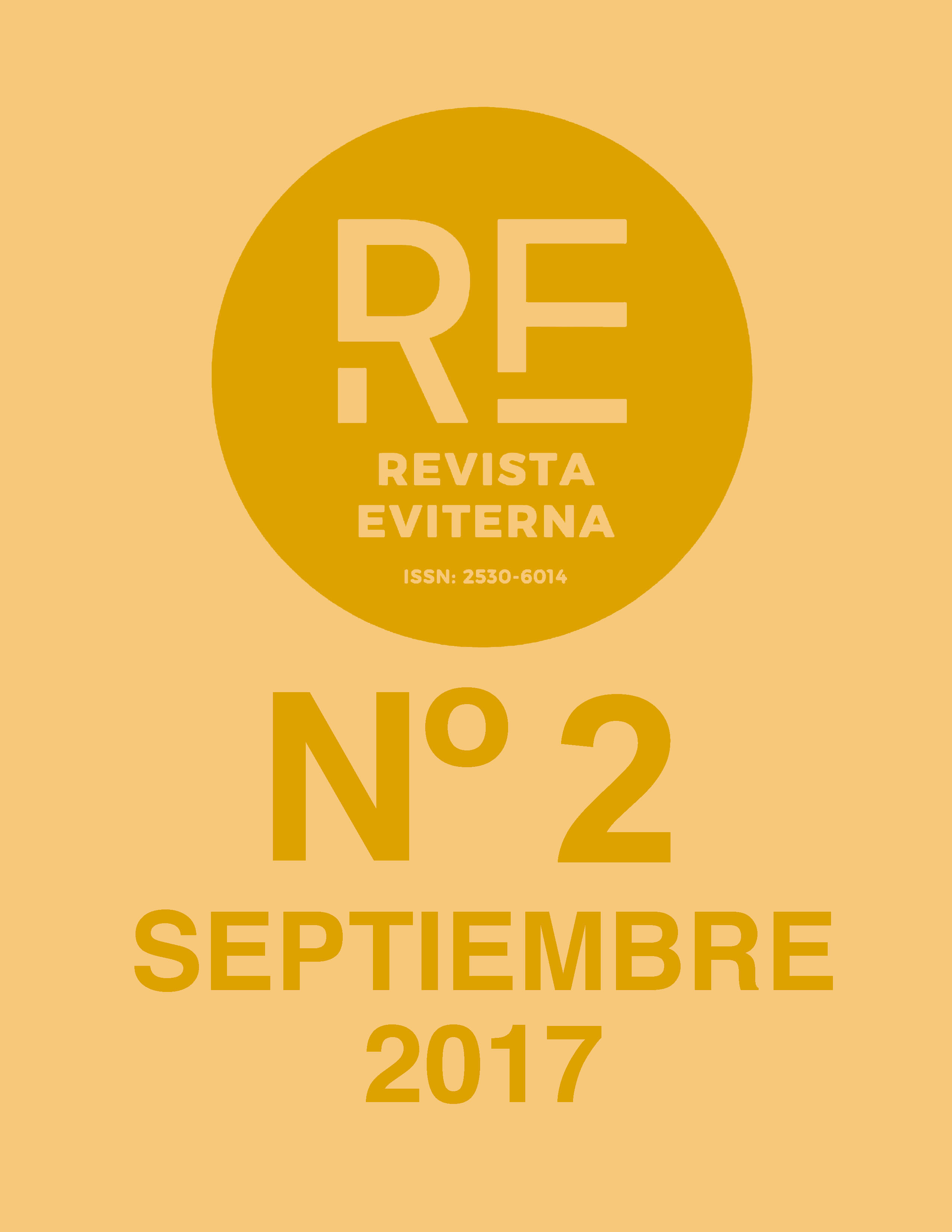Rosebushes that bloom in the garden where the Divine Husband is recreated: allegory of a Religious
DOI:
https://doi.org/10.24310/Eviternare.v0i2.8112Keywords:
Sheep; Good Sheered; Allegory; Craft PrayerAbstract
This analysis focuses on an allegory of the nuns as part of the sacred herd and protected by the Good Shepherd; it represents a small sheep with white wimple and black veil, referring to a professed nun, living in the mystical garden of the convent in the promise of the spiritual union with Jesus Christ. With a function that transits among an allegorical, identity and ceremonial status, the presence of the sheep in the convent becomes a mnemotechnical and craft prayer made by the nun who would affirm her belonging to the spiritual herd of Christ when creating this kind of objects.
Downloads
Metrics
References
ÁGREDA, Sor María de Jesús (1721). Mística Ciudad de Dios, Milagro de su omnipotencia y abismo de la gracia u Historia Divina y Vida de la Virgen Madre de Dios, Reyna y Señora nuestra María Santíssimma, Restauradora de la culpa de Eva y medianera de la Gracia, Imprenta de la causa de la Venerable Madre: Madrid.
ÁLVAREZ DE ABREU Y VALDÉS, Miguel Anselmo (1770). A las esposas de Jesu Christo nuestras amadas hijas las religiosas del convento de la Concepción de este nuestro obispado, salud y gracia, Oaxaca.
ARENDT, Hannah (2001). El concepto del amor en san Agustín, Ediciones Encuentro: Madrid.
BRAVO ARRIAGA, María Dolores (1995), “Sermo autoritatis: Otras cartas del obispo Santa Cruz a monjas”, Anuario Saber Novohispano (No. 2), 379-387. Recuperado de: http://www.iifilologicas.unam.mx/pnovohispano/uploads/95sabernovo/art25_95.pdf
CASTELLÓ ITURBIDE, Teresa (1998). La chaquira en México, Artes de México: México.
FERNÁNDEZ FÉLIX, Miguel (2003). Monjas Coronadas, Museo Nacional del Virreinato-CONACULTA: México.
FOUCAULT, Michel (1990). Tecnologías del yo y otros textos afines, Ediciones Paidós Ibérica, S.A. y Universidad Autónoma de Barcelona: Barcelona.
HAMBURGER, Jeffrey (1998). The visual and the visionary. Art and female spirituality in late medieval Germany, Zone Books: New York.
MURIEL, Josefina (1952). Retratos de monjas, Editorial Jus: México.
NÚÑEZ DE CEPEDA, Francisco (1682). Idea del Buen Pastor, Imprenta de Anisson y Posuel: Madrid.
ROMERO, Joseph Valentín (s.f.), La más hermosa flor de las rosas, que aviendo amurallado su corazón en la primavera de su vida con las rosas de sus virtudes, esperamos renasca en el ibierno del sepulchro, como fragante rosa del verano, Puebla.
SAN JERÓNIMO (2003). Obras completas de san Jerónimo, Biblioteca de autores cristianos: Madrid.
Downloads
Published
How to Cite
Issue
Section
License
All the contents published in Revista Eviterna are subject to the Creative Commons Reconocimento-NoComercia-Compartirigual 4.0 license, the full text of which can be found at <http://creativecommons.org/licenses/by-nc-sa/4.0>
They may be copied, used, disseminated, transmitted and publicly exposed, provided that:
The authorship and original source of your publication (Journal, editorial and URL of the work) are cited.
They are not used for commercial purposes.
The existence and specifications of this use license are mentioned.

Copyright is of two kinds: moral rights and patrimonial rights. Moral rights are perpetual, inalienable, inalienable, inalienable, inalienable and imprescriptible prerogatives.
In accordance with copyright legislation, Revista Eviterna recognizes and respects the moral rights of the authors, as well as the ownership of the economic right, which will be transferred to the University of Malaga for dissemination in open access.
The economic rights refer to the benefits obtained by the use or disclosure of the works. Revista Eviterna is published in open access and is exclusively authorized to carry out or authorize by any means the use, distribution, disclosure, reproduction, adaptation, translation or transformation of the work.
It is the responsibility of the authors to obtain the necessary permissions of the images that are subject to copyright.






12.png)
